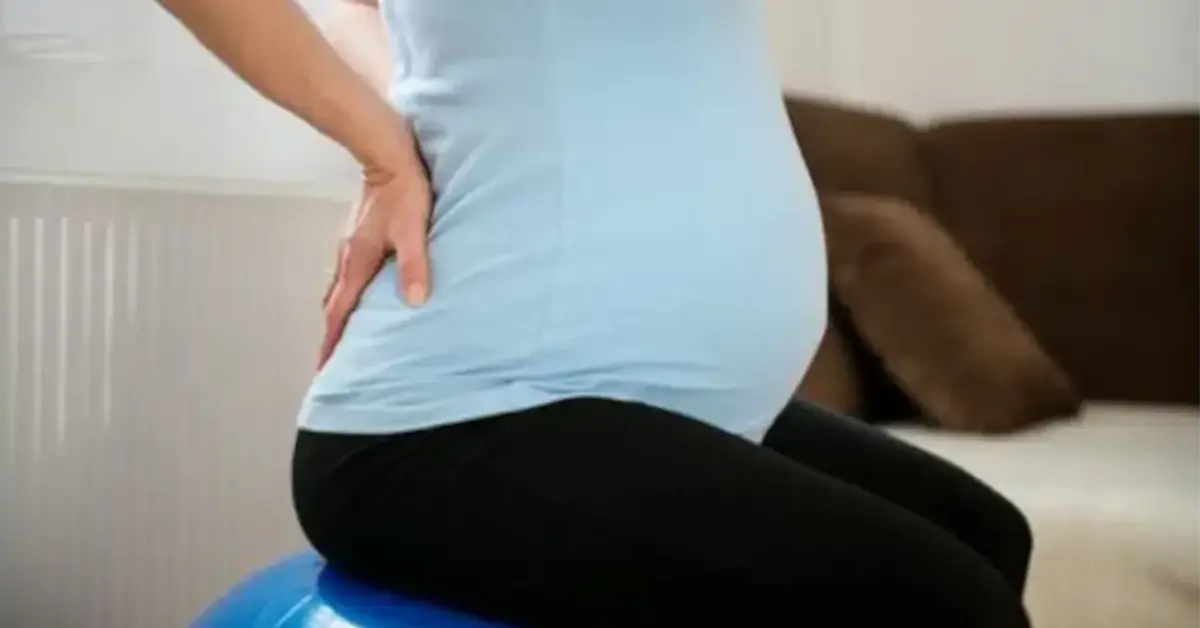You may have noticed that during your second trimester of pregnancy, you said “rub my back” to your partner more often than “I love you.” If so, you are not alone. Somewhere between 50 to 80 percent of women experience some form of discomfort in the low back during pregnancy. Posterior pelvic pain is discomfort observed at or near the back of the pelvis, below the spine or in the area of the sacroiliac joints. The sacroiliac joints (SIJ) are unique joints which form a dynamic structure that sits below the spine proper and between the sacrum and the ilium. The role of the SIJ is to absorb impact from the legs to the spine and to transmit this force efficiently throughout the body. Thus, the SIJ is imperative for many activities.
The SIJ is strengthened by ligaments and muscles (your core stabilizers) which contract to create a compressive force over the SIJ, gripping the joint tightly together; in essence, acting like a natural corset.
Unfortunately, many times, the stability of the SIJ is compromised, which is frequently the case during pregnancy.
In preparation for childbirth, hormones are released which call for an enlargement of the pelvis to accommodate delivery of the fetus. In addition, weight gain, decreased mobility and an altered walking pattern place added pressure on the joints, causing inflammation.
Patients generally complain of:
- Deep, aching pain in the back of the pelvis (around the SIJ)
- Pain which typically radiates to the buttock cheeks, groin and lateral thighs
- Occasionally, inflammation at or near the joint will piggyback on the infamous sciatic nerve (which typically runs close to the SIJ) and travel down the distribution of the nerve
To diagnose sacroiliac joint dysfunction, practitioners must consider the appropriate history. This condition is common during pregnancy and should be high on the differential. A thorough physical exam is also warranted, with an emphasis on the provocative maneuvers for sacroiliac pain. The most well-known is the FABER (Flexion, Abduction, External Rotation) maneuver.
Unfortunately, imaging studies are generally contraindicated during pregnancy given the risk to the unborn fetus.
The first-line treatment of pregnancy-related sacroiliac joint dysfunction is conservative care with an emphasis on physical therapy and exercises. The focus is on core stability, stretching and strengthening.
Bracing may be key. The traditional sacroiliac belt mechanically stabilizes the joint and occasionally provides comfort and pain relief.
Other treatments may include massage therapy / myofascial release, acupuncture or dry needling by a physician.
Unfortunately, injection therapy is unavailable due to undue risk to a growing fetus.
SIJ pain typically resolves soon after childbirth. If it does not resolve at the six-week mark, one may consider a more thorough look with imaging, and the possibility of an injection into the joint.
By: Dr. Jonathan Simhaee, Spine & Interventional Pain Management Specialist
At The Center for Musculoskeletal Disorders, our orthopedic practitioners are experienced treating Posterior Pelvic Pain during pregnancy and will work diligently and closely with you and your obstetrician to ensure your care is second to none.

